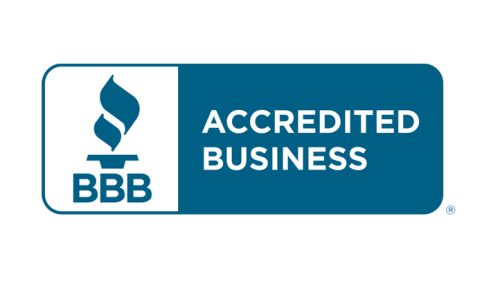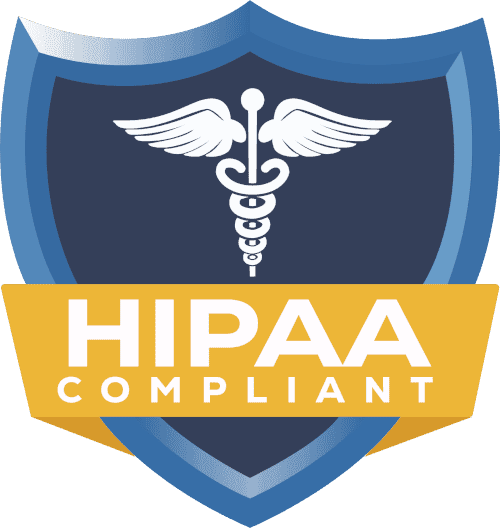How Much Should Small Practices Budget for Credentialing in 2025?

Whether you are working in a big hospital or a physician practicing in a small or solo practice, credentialing is crucial. Moreover, many practices and healthcare providers outsource the whole procedure to the expert credentialing firms. Similarly, others prefer to handle it themselves. Furthermore, both of these ways work. However, the main question is How Much Should Small Practices Budget for Credentialing in 2025?
Although there are many things to consider while budgeting for credentialing and cost-effective credentialing, read this blog to get a clear picture of credentialing budget planning.
Credentialing Services Needed by Small Practices
Small medical offices need a wide range of credentialing services that are often more than what the current staff members, who usually have more than one job, can handle effectively. Moreover, knowing these service standards helps practices make wise choices about how to use their resources and choose a service provider.
The following are credentialing services generally needed by small practices.
Initial Credentialing Services
- Provider Application Management: Filling out correct and complete applications for target insurance companies to reduce processing times.
- Setting up and managing your CAQH profile: Creating and maintaining up-to-date CAQH accounts for quick credentialing with multiple payers.
- Primary Source Verification Support: Ensures all necessary paperwork is in the right format and ready to lower the chance of verification process delays.
- Communication with and following up with payers: Regularly checking in with insurance companies during the credentialing process to ensure applications are being processed and problems are quickly fixed.
Ongoing Maintenance Services:
- Credentials Management: Professional services can track appointments for renewing credentials and start the renewal process early.
- Updates and Changes: Professional services can coordinate changes in a practice, such as opening new sites or changing services.
- Contract Review and Negotiation: Professional services can review contracts and negotiate better payment rates.
Specialized Credentialing Needs:
- Support for multiple state licenses: Knowledge of standards for various state licenses and how to join an interstate compact.
- Specialty Network Participation: Some medical types need to be part of specialized networks beyond regular insurance panels.
- Integration of Technology: Help is needed in setting up and maintaining tech links for licensing.
- Compliance Monitoring: Constant attention to new rules, quality reporting requirements, and network involvement standards.
You can either do some of these jobs yourself or hire someone else to do them for you, depending on your staffing needs and the skills you already have on hand.
Cost Breakdown: In-House vs. Outsourced
You need to look at both the direct expenses and the hidden costs that influence small office medical credentialing pricing to figure out how much licensing truly costs. Moreover, the size, complexity, and resources of the organization will determine whether to recruit management from inside or engage outside help. In addition, following a comparison of in-house and outsourced credentialing can help you understand both processes and their costs.
Cost Breakdown: In-house Credentialing:
In-house medical credentialing pricing is broken down as follows.
- Costs of hiring staff: The basic pay for a credentialing specialist in the United States is $51,019 as of January 1, 2025. Most of the time, the pay is between $45,583 and $65,088. This is a significant fixed expense for small firms that has to be covered by the quantity of work they do.
- Additional Staff Considerations: Hiring professionals to do medical credentialing may be expensive since compensation, benefits, and training add up rapidly. Moreover, if you charge $100 an hour, it may cost around $20,000 a year to do credentialing & enrollment for one doctor. Furthermore, it’s normal for small workplaces to be unable to afford to hire a full-time credentialing specialist. This means that work is less effective since people have to divide their time between different tasks.
- Benefits and Overhead: Companies need to prepare for more than just basic salary. Moreover, it also needs to plan for things like health insurance, retirement payments, payroll taxes, and more. Furthermore, most of the time, these extras add 25–35% to the total cost of compensation on top of basic income.
- Software and technology: It costs between $50 and $100 a month to run a small database. However, if you require extra tools for monitoring systems, storing records, and distributing items online, your technology expenditures might go up by $200 to $500 a month.
- Training and Education: Staff have to continuously learn and become educated since the requirements for credentials vary all the time. Therefore, set aside $1,000 to $3,000 a year for training courses, conferences, and keeping your credentials up to date.
- Space and equipment: You need a certain amount of space, computers, printers, and equipment to accomplish credentialing in-house. When making a credentialing budget plan, people typically forget about these fees, but they may add $3,000 to $5,000 a year for a solid setup.
Cost Breakdown: Outsourced Credentialing:
- Per-Provider Service Fees: The cost of credentialing services is generally between $2,000 and $5,000 per provider each year. They include things like looking into a provider’s background, following up with payers, and handling the complete credentialing procedure. This all-around technique takes care of every facet of credentialing & enrollment management.
- Initial Setup Costs: Setting up the system costs between $200 and $500, and the credentialing provider may charge between $50 and $100 a month to operate the database. These expenses up front establish ways of doing things that will be employed for management in the future.
- Cost of the application: Most medical credentialing programs charge between $200 and $500 per provider. Moreover, some services may charge you a one-time fee, while others may charge you every month for aid that lasts. Additionally, practices may save money by paying for what they need with per-application rates.
- Ongoing Maintenance: Some credentialing providers charge extra for revisions, recredentialing, and maintaining contracts, while others include maintenance that never ends in their annual rates. However, set aside an additional 20 to 30 percent of the initial budget for services that will endure.
Cost Comparison: In-House vs. Outsourced
For a small business with two to three providers:
- In-house Credentialing Cost for the Year:
Part-time licensing expert (0.5 FTE): $30,000 to $35,000
Taxes and benefits: $9,000 to $12,000
Technology and tools: $2,400 to $6,000
Training and schooling: $1,500 to $3,000 for
Total Costs per year: $42,900 to $56,000
- Outsourced Credentialing Costs Per Year:
Credentialing of a small practice of 3 providers at $2,500 average: $7,500
Initial setup and ongoing maintenance: $2,000-3,000
Total Annual Cost: $9,500-10,500
Based on this study, outsourcing usually costs 75–85% less than hiring management to work in-house for small practices, and it often leads to better knowledge and results.
The Comparison of In-House vs. Outsourced Credentialing.
| In-House Credentialing | Outsourced Credentialing |
| Less Control | More Control |
| Less Cost-Effective | More Cost-Effective |
| Less Focus on Core Operations | Deeper Focus on Core Operations |
| Less Flexible | Highly Flexible |
| Hiring Staff Issue | Instantly increase or decrease the number of agents |
| Delayed Customer Feedback | Instant Customer Feedback |
ROI Analysis and Long-Term Savings
Outsourcing credentialing can lead to substantial cost savings, freeing up resources for patient care and practice management. Here’s how it can offer a positive return on investment (ROI):
- Reduction in Staff Time and Error Rates: Credentialing requires precise attention to detail, and errors can lead to delays in reimbursement. Credentialing firms have specialized expertise, which can reduce mistakes.
- Faster Turnaround: With professional services, the credentialing process often moves faster, reducing the time it takes for new providers to start billing insurance.
- Enhanced Compliance: Reputable credentialing services stay up-to-date on regulatory changes, reducing the risk of compliance issues that could affect reimbursement.
- Costs of Staffing: It can cost $3,000 to $5,000 a month (pay plus training) to hire or give licensing work to an administrator.
- Software and Tools: Platforms for managing credentials or documents may cost $100 to $300 per month.
- Time: Filling out each application can take 5–15 hours, especially if you don’t know much about CAQH or the standards of your payer.
Budgeting Tips for Small Practices for Credentialing in 2025
Revenue Impact Analysis
- Consider the revenue impact of credentialing a small business.
- A single insurance panel can generate an additional $100,000 to $500,000 annually.
Step-by-Step Credentialing Process
- The credentialing process takes 90-120 days, depending on the payer.
- Plan for certification lifecycles of three to five years.
- Set aside 20 to 25 percent more for unexpected costs.
Cost-Cutting Strategies
- Start with networks with high patient numbers.
- Use CAQH’s efficiency to make contributions easier and less expensive.
- Offer a package of services.
- Consider outsourcing credentialing or prioritizing high-volume payers first.
- Plan for cash flow when deadlines are pushed back.
- Discuss payment options over time or with a payment plan.
- Consider the cost of not doing something early.
Investing in Technology
- Invest in excellent scanners, robust internet connections, and up-to-date software.
- Create structured systems for tracking.
- Plan for the future by choosing credentialing systems that can grow with your business.
Market Ideas for 2025
- Understand your competition and the time and cost of credentialing.
- Stay updated on healthcare rules and trends in payer consolidation.
Mistakes to Avoid While Budgeting
Healthcare practitioners or providers must avoid some mistakes to minimize the cost and speed up the process.
Underestimating the Total Cost of Credentialing:
- Overestimating in-house costs: Never underestimate the costs of benefits, taxes, training, technology, and overhead expenses.
- Underestimating time requirements: You must not assume staff can handle credentialing without recognizing the time intensity involved.
- Ignoring opportunity costs: Practitioners must not ignore opportunity costs. Moreover, the time spent on credentialing represents lost revenue-generating activities.
Poor Timeline Planning
- Starting too late: Credentialing efforts should begin close to planned practice opening or network participation dates.
- Underestimating processing times: Budget for 120-180 days for initial credentialing and 90-120 days for recredentialing to avoid cash flow problems.
- Failing to account for delays: Budget for incomplete applications, additional documentation requests, and seasonal processing variations.
Inadequate Service Selection
- Choosing based on price alone: The lowest-cost credentialing service may not provide adequate support.
- Mismatching services to needs: Some practices pay for comprehensive services they don’t need.
- Ignoring specialty requirements: Certain medical specialties have unique credentialing requirements.
Cash Flow Management Errors
- Inadequate reserve planning: Failing to maintain adequate cash reserves during credentialing periods can lead to unfavorable financing arrangements.
- Poor payment timing: Front-loading medical credentialing pricing without considering revenue timing can create unnecessary cash flow strain.
Technology and Process Mistakes
- Inadequate technology investment: Attempting to manage credentialing with outdated systems or inadequate technology often results in errors, delays, and inefficiencies.
- Poor document management: Disorganized document management leads to lost files, missed deadlines, and repeated work.
Vendor Relationship Management
- Inadequate due diligence: Failing to properly research credentialing service providers can result in poor service selection, unexpected costs, or substandard outcomes.
Final Thoughts:
Small practices can get cost-effective, speedy, and accurate credentialing by consulting with the top credentialing company, Credex Healthcare. Moreover, small practice businesses increasingly need medical billing outsourcing in 2025. Furthermore, it isn’t a new trend; it’s what makes coding, billing, and many other tasks more efficient, which leads to the desired results. When you work with our skilled medical billing expert, you don’t need to hire in-house staff to do the coding and billing. So, our experts will take care of insurance credentialing & enrollment cases quickly and clearly, which will help with an increase in revenue.
Are you a small practice that wants to get in-budget credentialing in 2025?
Book a call with an expert at Credex Healthcare right away.
FAQs
Can credentialing be handled in-house for lower costs?
Yes, but you need time, trained staff, and tools like CAQH, PECOS, and user platforms to do it. Making mistakes may prevent you from saving money, as they can lead to delays and financial losses.
Are there discounts for credentialing multiple providers?
Most credentialing companies offer savings based on how many you buy. In most cases, the cost per source goes down as more suppliers sign up.
What’s the average credentialing fee for one provider?
You can expect to pay around $200 to $500 per provider for each application, or $1,000 to $2,500 for full credentialing from start to finish.



















